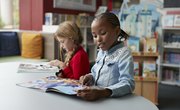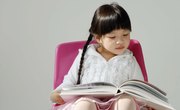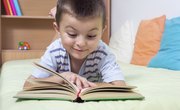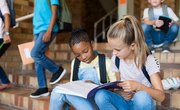Theories for teaching reading skills have changed over the years as research has helped educators understand how children learn and develop. Educators still argue over the best approach to teaching children to read. The most prominent argument in the reading classroom today is phonics versus whole word. However, these are not the only approaches for teaching reading in use in today's classroom.
Emergent Literacy
Emergent literacy is a theory that states that children begin developing reading skills as infants. As their parents read to them, these infants develop a feeling for language and associate reading with comfort and love. As they grow, they learn how books work and begin to associate the symbols on the page with words. Eventually, they are able to decode the words on the page themselves.
Behaviorist Theory
The behaviorist theory of reading was developed in the 1970s but is still used in some schools today. According to this theory, children learn language by repeating words and sentences given by their teachers or on workbook pages. To learn to read, children must work through and develop a series of isolated skills. Phonics, which teaches readers to associate letters with their sounds, is the best-known example of a behaviorist approach to reading.
Social Constructivist Theory
The social constructivist theory emphasizes the child's environment as she learns to read. This theory states that children gain knowledge within their culture and that they learn best with the help of an adult. Whole language approaches to reading, which emphasize the overall meaning of a text rather the sounds of individual letters, are examples of social constructivist theories.
Top-Down Theory
According to the top-down theory, reading is a natural process that children learn when they live in a language-rich environment. Repeating words, phrases, sentences and even whole books helps new readers internalize language and begin to read fluently. Mistakes are seen as positive indicators that a child is willing to take a risk.
Balanced Approach
A combination of reading theories and instructional approaches may be the best approach to teaching children to read. The overall goal of a reading program should be to help children develop the skills and strategies they need for reading while nurturing a love of reading and exposing children to a variety of reading materials.
Related Articles
References
Writer Bio
Stacey Schifferdecker has worked as a professional writer since 1989. She holds a Master of Arts degree in English from Oklahoma State University. Schifferdecker has written and edited user guides, newsletters, brochures, curriculum, proposals, web copy, and ebooks.











